The great white shark (Carcharodon carcharias), also known as the great white, white pointer, white shark, or white death, is a species of large lamniform shark which can be found in the coastal surface waters of all the major oceans.
The great white shark is mainly known for its size, with mature individuals growing up to 6.4 m (21 ft) in length (although reports have been published of great white sharks measuring over 8 m (26 ft),[3] and 3,324 kg (7,328 lb) in weight).[4][5][6][7]
This shark reaches its maturity around 15 years of age and was previously believed to have a life span of over 30 years. The true lifespan of great white sharks is far longer; now estimated to be as long as 70 years or more, making it one of the longest lived cartilaginous fish currently known.[8]
Male great white sharks take 26 years to reach sexual maturity, while the females take 33 years to be ready to produce offspring.[9] Great white sharks can accelerate to over 56 km/h (35 mph).[10]
The great white shark has no natural predators other than the killer whale.[11] The great white shark is arguably the world's largest known extant macropredatory fish, and is one of the primary predators of marine mammals.
It is also known to prey upon a variety of other marine animals, including fish and seabirds. It is the only known surviving species of its genus Carcharodon, and is ranked first in having the most recorded attacks on humans.[12][13]
The IUCN list the great white shark as a vulnerable species,[2] while it is included in Appendix II of CITES.[14]
The bestselling novel Jaws by Peter Benchley and the subsequent blockbuster film by Steven Spielberg depicted the great white shark as a "ferocious man eater".
Humans are not the preferred prey of the great white shark,[15] but, nevertheless, the great white is responsible for the largest number of reported and identified fatal unprovoked shark attacks on humans.[16]
| Great white shark Temporal range: 16–0 Ma[1] Miocene to Recent |
|
|---|---|
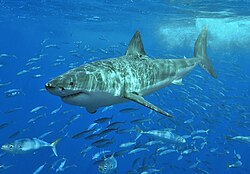 |
|
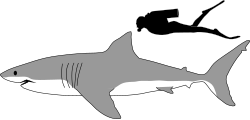 |
|
| Scientific classification | |
| Kingdom: | Animalia |
| Phylum: | Chordata |
| Class: | Chondrichthyes |
| Subclass: | Elasmobranchii |
| Superorder: | Selachimorpha |
| Order: | Lamniformes |
| Family: | Lamnidae |
| Genus: | Carcharodon A. Smith, 1838 |
| Species: | C. carcharias |
| Binomial name | |
| Carcharodon carcharias (Linnaeus, 1758) |
|
 |
|
| Global range highlighted in blue | |
Taxonomy
In 1758, Carolus Linnaeus gave the great white shark its first scientific name, Squalus carcharias. Later, Sir Andrew Smith gave it Carcharodon as its generic name in 1833, and also in 1873.
The generic name was identified with Linnaeus' specific name and the current scientific name, Carcharodon carcharias, was finalized. Carcharodon comes from the Greek words karcharos, which means sharp or jagged, and odous, which means tooth.[17]
Ancestry and fossil record
The great white shark came into existence during the mid-Miocene epoch. The earliest known fossils of the great white shark are about 16 million years old.[1]
However, the phylogeny of the great white is still in dispute. The original hypothesis for the great white's origins is that it shares a common ancestor with a prehistoric shark, such as the C. megalodon.
C. megalodon had teeth that were superficially not too dissimilar with those great white sharks but its teeth were far larger. Although cartilaginous skeletons do not fossilize, C. megalodon is estimated to have been considerably larger than the great white shark, estimated at up to at least 17 m (56 ft) and 59,413 kg (130,983 lb).[18]
Similarities among the physical remains and the extreme size of both the great white and C. megalodon led many scientists to believe these sharks were closely related, and the name Carcharodon megalodon was applied to the latter.
However, a new hypothesis proposes that the C. megalodon and the great white are distant relatives (albeit sharing the family Lamnidae).
The great white is also more closely related to an ancient mako shark, Isurus hastalis, than to the C. megalodon, a theory that seems to be supported with the discovery of a complete set of jaws with 222 teeth and 45 vertebrae of the extinct transitional species Carcharodon hubbelli in 1988 and published on 14 November 2012.[19]
In addition, the new hypothesis assigns C. megalodon to the genus Carcharocles, which also comprises the other megatoothed sharks; Otodus obliquus is the ancient representative of the extinct Carcharocles lineage.[20]
Distribution and habitat
One of the densest known populations is found around Dyer Island, South Africa, where almost all of the shark research is done.
The great white is an epipelagic fish, observed mostly in the presence of rich game, such as fur seals (Arctocephalus ssp.), sea lions, cetaceans, other sharks, and large bony fish species. In the open ocean, it has been recorded at depths as great as 1,200 m (3,900 ft).[22] These findings challenge the traditional notion that the great white is a coastal species.[22]
According to a recent study, California great whites have migrated to an area between Baja California Peninsula and Hawaii known as the White Shark Café to spend at least 100 days before migrating back to Baja.
On the journey out, they swim slowly and dive down to around 900 m (3,000 ft). After they arrive, they change behavior and do short dives to about 300 m (1,000 ft) for up to ten minutes.
Another white shark that was tagged off of the South African coast swam to the southern coast of Australia and back within the year.
A similar study tracked a different great white shark from South Africa swimming to Australia's northwestern coast and back, a journey of 20,000 km (12,000 mi; 11,000 nmi) in under nine months.[23]
These observations argue against traditional theories that white sharks are coastal territorial predators, and open up the possibility of interaction between shark populations that were previously thought to have been discrete. The reasons for their migration and what they do at their destination is still unknown. Possibilities include seasonal feeding or mating.[24]
Anatomy and appearance
The great white shark has a robust, large, conical snout. The upper and lower lobes on the tail fin are approximately the same size which is similar to some mackerel sharks.
A great white displays countershading, by having a white underside and a grey dorsal area (sometimes in a brown or blue shade) that gives an overall mottled appearance.
The coloration makes it difficult for prey to spot the shark because it breaks up the shark's outline when seen from the side. From above, the darker shade blends with the sea and from below it exposes a minimal silhouette against the sunlight.
Great white sharks, like many other sharks, have rows of serrated teeth behind the main ones, ready to replace any that break off. When the shark bites, it shakes its head side-to-side, helping the teeth saw off large chunks of flesh.[25]
Size
Great white shark caught off Cuba in 1945 which was allegedly 6.4 m (21 ft) long and weighed an estimated 3,175 kg (7,000 lb).[26]
Adults on average are 4–5.2 m (13–17 ft) long and have a mass of 680–1,100 kg (1,500–2,430 lb). Females are generally larger than males. The great white shark can reach 6.4 m (21 ft) in length and 3,324 kg (7,328 lb) in weight.[3][4][5][6][7]
The maximum size is subject to debate because some reports are rough estimations or speculations performed under questionable circumstances.[27]
Among living cartilaginous fish, only the whale shark (Rhincodon typus), the basking shark (Cetorhinus maximus) and the giant manta ray (Manta birostris), in that order, average larger and heavier.
These three species are generally quite docile in disposition and given to passively filter-feeding on very small organisms.[28]
A number of very large great white shark specimens have been recorded.[29] For decades, many ichthyological works, as well as the Guinness Book of World Records, listed two great white sharks as the largest individuals: In the 1870s, a 10.9 m (36 ft) great white captured in southern Australian waters, near Port Fairy, and an 11.3 m (37 ft) shark trapped in a herring weir in New Brunswick, Canada, in the 1930s.
Some researchers question these measurements' reliability, noting they were much larger than any other accurately reported sighting. This New Brunswick shark may have been a misidentified basking shark, as the two have similar body shapes.
The question of the Port Fairy shark was settled in the 1970s when J. E. Randall examined the shark's jaws and "found that the Port Fairy shark was of the order of 5 m (17 ft) in length and suggested that a mistake had been made in the original record, in 1870, of the shark's length".[30]
According to J. E. Randall, the largest white shark reliably measured was a 6.0 m (19.7 ft) individual reported from Ledge Point, Western Australia in 1987.[30]
Another great white specimen of similar size has been verified by the Canadian Shark Research Center: A female caught by David McKendrick of Alberton, Prince Edward Island, in August 1988 in the Gulf of St. Lawrence off Prince Edward Island. This female great white was 6.1 m (20 ft) long.[7]
However, there is a report considered reliable by some experts of a larger great white shark specimen from Cuba in 1945. This specimen was 6.4 m (21 ft) long and had a body mass of about 3,324 kg (7,328 lb).[4][5]
Great white shark caught off Hualien County, Taiwan, on 14 May 1997: It was reportedly almost 7 m (23 ft) in length with a mass of 2,500 kg (5,500 lb).[29]
However, J. E. Randall believed that great white shark may have exceeded 6.1 m (20 ft) in length.[30] A great white shark was captured near Kangaroo Island in Australia on 1 April 1987.
This shark was estimated to be more than 7 m (23 ft) long by Peter Resiley,[30][32] and has been designated as KANGA.[31]
Another great white shark was caught in Malta by Alfredo Cutajar on 16 April 1987. This shark was also estimated to be around 7.13 m (23.4 ft) long by John Abela and has been designated as MALTA.[31]
However, Cappo drew criticism because he used shark size estimation methods proposed by J. E. Randall to suggest that the KANGA specimen was 5.8–6.4 m (19–21 ft) long.[31]
In a similar fashion, I. K. Fergusson also used shark size estimation methods proposed by J. E. Randall to suggest that the MALTA specimen was 5.3–5.7 m (17–19 ft) long.[31]
However, photographic evidence suggested that these specimens were larger than the size estimations yielded through Randall's methods.[31]
Thus, a team of scientists—H. F. Mollet, G. M. Cailliet, A. P. Klimley, D. A. Ebert, A. D. Testi, and L. J. V. Compagno—reviewed the cases of the KANGA and MALTA specimens in 1996 to resolve the dispute by conducting a comprehensive morphometric analysis of the remains of these sharks and re-examination of photographic evidence in an attempt to validate the original size estimations and their findings were consistent with them.
The findings indicated that estimations by P. Resiley and J. Abela are reasonable and could not be ruled out.[31]
A particularly large female great white nicknamed "Deep Blue", measuring at least 6.09 metres (20.0 ft) was filmed off Guadalupe during shooting for the 2014 episode of Shark Week "Jaws Strikes Back".[33]
Deep Blue would also later gain significant attention when she was filmed interacting with researcher Mauricio Hoyas Pallida in a viral video that Mauricio posted on Facebook on June 11, 2015.[34]
A particularly infamous great white shark, supposedly of record proportions, once patrolled the area that comprises False Bay, South Africa, was said to be well over 7 metres (23 ft) during the early 1980s.
This shark, known locally as the "Submarine", had a legendary reputation that was supposedly well founded.
Though rumors have stated this shark was exaggerated in size or non-existent altogether, witness accounts by the then young Craig Anthony Ferreira, a notable shark expert in South Africa, and his father indicate an unusually large animal of considerable size and power (though it remains uncertain just how massive the shark was as it escaped capture each time it was hooked)
Ferreira describes the four encounters with the giant shark he participated in with great detail in his book "Great White Sharks On Their Best Behavior".[35]
Great white shark's skeleton.
While tiger sharks which are typically both a few feet smaller and have a leaner, less heavy body structure than white sharks, have been confirmed to reach at least 5.5 metres (18 ft) in the length, an unverified specimen was reported to have measured 7.4 metres (24 ft) in length and weighed 3,110 kilograms (6,860 lb).[28][36]
Some other macropredatory sharks such as the Greenland shark (Somniosus microcephalus) and the Pacific sleeper shark (S. pacificus) are also reported to rival these sharks in length (but probably weigh a bit less since they are more slender in build than a great white) in exceptional cases.[37][38]
The question of maximum weight is complicated by the unresolved question of whether or not to include the shark's stomach contents when weighing the shark. With a single bite a great white can take in up to 14 kg (31 lb) of flesh, and can also consume several hundred kilograms of food.
The largest great white recognized by the International Game Fish Association (IGFA) is one caught by Alf Dean in the south Australian waters in 1959, weighing 1,208 kg (2,663 lb).[27]
Several larger great whites caught by anglers have since been verified, but were later disallowed from formal recognition by IGFA monitors for rules violations.
Adaptations
A great white shark swimming.
Every time a living creature moves, it generates an electrical field and great whites are so sensitive they can detect half a billionth of a volt.
Even heart beats emit a very faint electrical pulse. If it is close enough, the shark can detect even that faint electrical pulse. Most fish have a less-developed but similar sense using their body's lateral line.[39]
This close web-like structure of veins and arteries, located along each lateral side of the shark, conserves heat by warming the cooler arterial blood with the venous blood that has been warmed by the working muscles.
This keeps certain parts of the body (particularly the stomach) at temperatures up to 14 °C (25 °F)[40] above that of the surrounding water, while the heart and gills remain at sea temperature.
When conserving energy the core body temperature can drop to match the surroundings. A great white shark's success in raising its core temperature is an example of gigantothermy.
Therefore, the great white shark can be considered an endothermic poikilotherm because its body temperature is not constant but is internally regulated.[25] Great whites also rely on the fat and oils stored within their livers for long distance migrations across nutrient-poor areas of the oceans.[41]
Studies by Stanford University and the Monterey Bay Aquarium published on 17 July 2013 revealed that In addition to controlling the sharks' buoyancy, the liver of great whites is essential in migration patterns.
Sharks that sink faster during drift dives were revealed to use up their internal stores of energy quicker than those which sink in a dive at more leisurely rates.[42]
Bite force
A 2007 study from the University of New South Wales in Sydney, Australia, used CT scans of a shark's skull and computer models to measure the shark's maximum bite force. The study reveals the forces and behaviors its skull is adapted to handle and resolves competing theories about its feeding behavior.[43]
In 2008, a team of scientists led by Stephen Wroe conducted an experiment to determine the great white shark's jaw power and findings indicated that a specimen more than 6.1 m (20 ft) long could exert a bite force of over 18,000 newtons (4,000 lbf).[5]
Ecology and behavior
When hunting, great whites tend to separate and resolve conflicts with rituals and displays. White sharks rarely resort to combat although some individuals have been found with bite marks that match those of other white sharks.
This suggests that when another shark approaches too closely to another great white, they react with a warning bite. Another possibility is that white sharks bite to show their dominance.
The great white shark is one of only a few sharks known to regularly lift its head above the sea surface to gaze at other objects such as prey.
This is known as spy-hopping. This behavior has also been seen in at least one group of blacktip reef sharks, but this might be learned from interaction with humans (it is theorized that the shark may also be able to smell better this way because smell travels through air faster than through water).
The white sharks are generally very curious animals, display intelligence and may also turn to socializing if the situation demands it. At Seal Island, white sharks have been observed arriving and departing in stable "clans" of two to six individuals on a yearly basis.
Whether clan members are related is unknown but they get along peacefully enough. In fact, the social structure of a clan is probably most aptly compared to that of a wolf pack; in that each member has a clearly established rank and each clan has an alpha leader.
When members of different clans meet, they establish social rank nonviolently through any of a fascinating variety of interactions.[44]
Diet
A great white shark scavenging on a whale carcass.
Great whites have also been known to eat objects that they are unable to digest. Juvenile white sharks predominantly prey on fish including other elasmobranchs, as their jaws are not strong enough to withstand the forces required to attack larger prey such as pinnipeds and cetaceans until they reach a length of 3 metres (9.8 ft) or more, at which point their jaw cartilage mineralizes enough to withstand the impact of biting into larger prey species.[46]
Upon approaching a length of nearly 4 metres (13 ft), great white sharks begin to target predominately marine mammals for food, though individual sharks seem to specialize in different types of prey depending on their preferences.[47][48]
They seem to be highly opportunistic.[49][50] These sharks prefer prey with a high content of energy-rich fat. Shark expert Peter Klimley used a rod-and-reel rig and trolled carcasses of a seal, a pig, and a sheep from his boat in the South Farallons. The sharks attacked all three baits but rejected the sheep carcass.[51]
The great white shark's reputation as a ferocious predator is well-earned, yet they are not (as was once believed) indiscriminate "eating machines". They are ambush hunters, taking prey by surprise from below.
Near Seal Island, in South Africa's False Bay, shark attacks most often occur in the morning, within 2 hours of sunrise, when visibility is poor. Their success rate is 55% in the first 2 hours, falling to 40% in late morning after which hunting stops.[44]
Hunting techniques vary by species of the prey. Off Seal Island, the sharks ambush brown fur seals (Arctocephalus pusillus) from below at high speeds, hitting the seal mid-body. They go so fast that they can completely leave the water.
The peak burst speed of these sharks is largely accepted in the scientific community to be above 40 kilometres per hour (25 mph), although the exact speed remains a matter of speculation.[52]
They have also been observed chasing prey after a missed attack. Prey is usually attacked at the surface.[53]
Off California, sharks immobilize northern elephant seals (Mirounga angustirostris) with a large bite to the hindquarters (which is the main source of the seal's mobility) and wait for the seal to bleed to death.
This technique is especially used on adult male elephant seals, which are typically larger than the shark, ranging between 1,500 and 2,000 kg (3,300 and 4,400 lb), and are potentially dangerous adversaries.[54][55]
Most commonly though, juvenile elephant seals are the most frequently eaten at elephant seal colonies.[56]
Prey is normally attacked sub-surface. Harbour seals (Phoca vitulina) are taken from the surface and dragged down until they stop struggling. They are then eaten near the bottom. California sea lions (Zalophus californianus) are ambushed from below and struck mid-body before being dragged and eaten.[57]
Off the East Coast of North America, where white sharks are still poorly understood, individuals have been filmed and documented hunting grey seals (Halichoerus grypus).
When hunting, Atlantic great whites will hunt very close to shore, unlike their counterparts elsewhere which prefer deeper water for ambush and breach attacks.
The sharks also utilize sandbars to set up ambushes, and will then chase the seals in a flat-out pursuit. This behavior was revealed to the public media during two episodes of Shark Week ("Jaws Comes Home" and "Return of Jaws").
White sharks also attack dolphins and porpoises from above, behind or below to avoid being detected by their echolocation.
Targeted species include dusky dolphins (Lagenorhynchus obscurus),[31] Risso's dolphins (Grampus griseus),[31] bottlenose dolphins (Tursiops ssp.),[31][58] Humpback dolphins (Sousa ssp.),[58] harbour porpoises (Phocoena phocoena),[31] and Dall's porpoises (Phocoenoides dalli).[31]
Close encounters between dolphins and predatory sharks often result in evasive responses by the dolphins.[58] However, in rare cases, a group of dolphins may chase a single predatory shark away in an act of defense.[58]
White shark predation on other species of small cetacean has also been observed. In August 1989, a 1.8 metres (5.9 ft) juvenile male pygmy sperm whale (Kogia breviceps) stranded in central California with a bite mark on its caudal peduncle from a great white shark.[59]
In addition, white sharks also attack and prey upon beaked whales.[31][58] Cases where an adult Stejneger's beaked whale (Mesoplodon stejnegeri), with a mean mass of around 1,100 kg (2,400 lb),[60] and a juvenile Cuvier's beaked whale (Ziphius cavirostris), an individual estimated at 3 m (9.8 ft), were hunted and killed by great white sharks have also been observed.[61]
When hunting sea turtles, they appear to simply bite through the carapace around a flipper immobilizing the turtle. The heaviest species of bony fish, the oceanic sunfish (Mola mola), has been found in great white shark stomachs.[49]
A beachcomber looking at bite marks from a great white shark on a beached whale carcass.
A 3 m (9.8 ft) long great white shark was nearly bitten into two by a reportedly 6 m (20 ft) long great white shark in Stradbroke Island, near Brisbane in Australia.[62]
White sharks also scavenge on whale carcasses, a phenomenon that often leads to interactions and possibly shapes the ecosystem impacts, behaviors and movements. Larger white sharks feed first, primarily on the blubber, with smaller animals feeding off chunks dislodged or torn from the carcasses that float away.
Interestingly, white sharks prefer to feed off the fluke first before moving to other portions of the body. The discovery also lends credence to the theory that large white sharks travel throughout ocean corridors in search of dead, dying and severely injured whales as well as bringing their predations on seals to temporary halts.[63]
In one such documented incident, white sharks were observed scavenging on a whale carcass alongside tiger sharks.[64]
Reproduction
Almost nothing is known about the reproduction of great whites. Some evidence points to the near-soporific effect of a large feast (such as a whale carcass) possibly inducing mating.[65]
Great white sharks were previously thought to reach sexual maturity at around 15 years of age, but actually take far longer; male great white sharks reach sexual maturity at age 26, while females take 33 years to reach sexual maturity.[9][66][67]
Maximum life span was originally believed to be more than 30 years, but in a study by the Woods Hole Oceanographic Institution, the true lifespan of the great white shark was revealed to be up to 70 years or more, with examinations of growth ring count in vertebrae including ages of 73 years old in the oldest male and 40 years old in the oldest female in the study, making the species far more vulnerable to pressures such as overfishing and environmental change due to their late maturity, low reproductive rate and slow growth.[8] (see references).
Little is known about the great white shark's behavior in the way of mating habits. Birth has never been observed, but pregnant females have been examined. Great white sharks are ovoviviparous, which means eggs develop and hatch in the uterus and continue to develop until birth.[68]
The great white has an 11-month gestation period. The shark pup's powerful jaws begin to develop in the first month. The unborn sharks participate in oophagy, in which they feed on ova produced by the mother. Delivery is in spring and summer.[69]
The Northern Pacific population of great whites is suspected to breed off of the Sea of Cortez, as evidenced by local fisherman who have said to have caught them and evidenced by teeth found at dump sites for discarded parts from their catches.
Breaching behavior
A breach is the result of a high speed approach to the surface with the resulting momentum taking the shark partially or completely clear of the water. This is a hunting technique employed by great white sharks whilst hunting seals.
This behavior often takes place on cape fur seals at Seal Island in False Bay, South Africa but due to the randomness of the location of a shark's breach, it was very hard to document.
It was first photographed by Chris Fallows and Rob Lawrence who developed the technique of towing a slow moving seal decoy to trick the sharks to breach.[70]
Here, in the region of 600 natural predatory events are recorded annually from April to September each year. The seals swim on the surface and the great white sharks launch their predatory attack from the deeper water below.
They can reach speeds of up to 40 kilometres per hour (25 mph) and can at times launch themselves more than 10 feet (3.0 m) into the air. Data recorded shows that the sharks are successful in just under 50% of all these natural predatory events.[71]
In 2011, a 3 metres (9.8 ft) long shark jumped onto a seven-person research vessel off Seal Island in Mossel Bay. The crew were undertaking a population study using sardines as bait, and the incident was judged to be an accident.[72]
Natural threats
Interspecific competition between the great white shark and the orca is probable in regions where dietary preferences of both species may overlap.[58]
An incident was documented on 4 October 1997, in the Farallon Islands off California in the United States.
An estimated 4.7–5.3-metre (15–17 ft) female orca immobilized an estimated 3–4-metre (9.8–13.1 ft) great white shark.[73] The orca held the shark upside down to induce tonic immobility and kept the shark still for fifteen minutes, causing it to suffocate and then proceeded to eat the dead shark's liver.[58][73][74]
It is believed that the scent of the slain shark's carcass caused all the great whites in the region to flee, forfeiting an opportunity for a great seasonal feed.[75] Another similar attack apparently occurred there in 2000, but its outcome is not clear.[76]
After both attacks, the local population of about 100 great whites vanished.[74][76] Following the 2000 incident, a great white with a satellite tag was found to have immediately submerged to a depth of 500 m (1,600 ft) and swum to Hawaii.[76]
In 2015, a pod of orcas was recorded to have killed a white shark off South Australia.[77]
Relationship with humans
Shark attacks
Main article: Shark attack
More than any documented attack, Peter Benchley's best-selling novel Jaws and the subsequent 1975 film adaptation directed by Steven Spielberg provided the great white shark with the image of being a "man eater" in the public mind.[78]
While great white sharks have killed humans in at least 74 documented unprovoked attacks in which the species was identified, they typically do not target them: for example, in the Mediterranean Sea there have been 31 confirmed attacks against humans in the last two centuries, most of which were non-fatal.
Many of the incidents seemed to be "test-bites". Great white sharks also test-bite buoys, flotsam, and other unfamiliar objects, and they might grab a human or a surfboard to identify what it is.
The great white shark is one of only four kinds of sharks that have been
involved in a significant number of fatal unprovoked attacks on humans.
Further research shows that they can tell in one bite whether or not the object is worth attacking. Humans, for the most part, are too bony for their liking. They much prefer a fat, protein-rich seal.[80]
Humans are not appropriate prey because the shark's digestion is too slow to cope with a human's high ratio of bone to muscle and fat. Accordingly, in most recorded attacks, great whites broke off contact after the first bite.
Fatalities are usually caused by blood loss from the initial bite rather than from critical organ loss or from whole consumption. From 1990 until 2011 there have been a total of 139 unprovoked great white shark attacks, 29 fatal.[81]
However, some researchers have hypothesized that the reason the proportion of fatalities is low is not because sharks do not like human flesh, but because humans are often able to escape after the first bite.
In the 1980s, John McCosker, Chair of Aquatic Biology at the California Academy of Sciences, noted that divers who dove solo and were attacked by great whites were generally at least partially consumed, while divers who followed the buddy system were generally rescued by their buddy.
McCosker and Timothy C. Tricas, an author and professor at the University of Hawaii, suggest that a standard pattern for great whites is to make an initial devastating attack and then wait for the prey to weaken before consuming the wounded animal. Humans' ability to move out of reach with the help of others, thus foiling the attack, is unusual for a great white's prey.[82]
In 2014 the state government of Western Australia led by Premier Colin Barnett implemented a policy of killing large sharks. The policy is intended to protect users of the marine environment from shark attack following the deaths of seven people on the Western Australian coastline in the years 2010 to 2013.[83]
Baited drum lines are deployed near popular beaches using hooks designed to catch great white sharks, as well as bull and tiger sharks. Large sharks found hooked but still alive are shot and their bodies discarded at sea.[84]
The government claims they are not culling the sharks, but are using a "targeted, localised, hazard mitigation strategy".[85] Barnett has described opposition as "ludicrous" and "extreme", and said that nothing can change his mind.[86]
Attacks on boats
Great white sharks infrequently attack and sometimes even sink boats. Only five of the 108 authenticated unprovoked shark attacks reported from the Pacific Coast during the 20th century involved kayakers.[87]
In a few cases they have attacked boats up to 10 metres (33 ft) in length. They have bumped or knocked people overboard, usually attacking the boat from the stern.
In one case in 1936, a large shark leapt completely into the South African fishing boat Lucky Jim, knocking a crewman into the sea. Tricas and McCosker's underwater observations suggest that sharks are attracted to boats by the electrical fields they generate.[88]
Great white sharks in captivity
The idea of containing a live great white at SeaWorld Orlando was used in the 1983 film Jaws 3-D.
In 1984, shortly before its opening day, the Monterey Bay Aquarium in Monterey, California, housed its first great white shark which had died after 10 days.
In July 2003, Monterey researchers captured a small female and kept it in a large netted pen near Malibu for five days. They had the rare success of getting the shark to feed in captivity before its release.[90]
Not until September 2004 was the aquarium able to place a great white on long-term exhibit. A young female, which was caught off the coast of Ventura, was kept in the aquarium's 3,800,000-litre (1,000,000 US gal) Outer Bay exhibit for 198 days before she was released in March 2005.
She was tracked for 30 days after release.[91]
On the evening of 31 August 2006, the aquarium introduced a juvenile male caught outside Santa Monica Bay.[92]
His first meal as a captive was a large salmon steak on 8 September 2006, and as of that date, he was estimated to be 1.72 metres (68 in) in length and to weigh approximately 47 kilograms (104 lb). He was released on 16 January 2007, after 137 days in captivity.
Monterey Bay Aquarium housed a third great white, a juvenile male, for 162 days between 27 August 2007, and 5 February 2008.
On arrival, he was 1.4 m (4.6 ft) long and weighed 30.6 kg (67 lb). He grew to 1.8 m (5.9 ft) and 64 kg (141 lb) before release.
A juvenile female came to the Outer Bay Exhibit on 27 August 2008. While she did swim well, the shark fed only one time during her stay and was tagged and released on 7 September 2008.
Another juvenile female was captured near Malibu on 12 August 2009, introduced to the Outer Bay exhibit on 26 August 2009, and was successfully released into the wild on 4 November 2009.[93]
The Monterey Bay Aquarium added a 1.4 metres (4.6 ft) long male into their redesigned "Open Sea" exhibit on 31 August 2011. The animal was captured in the waters off of Malibu.
Probably the most famous captive was a 2.4 m (7.9 ft) female named Sandy, which in August 1980 became the only great white to be housed at the California Academy of Sciences' Steinhart Aquarium in San Francisco, California. She was released because she would not eat and constantly bumped against the walls.[94]
Shark tourism
A great white shark approaches divers in a cage off Dyer Island, Western Cape, South Africa.
A great white shark approaches a cage.
Cage diving and swimming with sharks is a focus for a booming tourist industry due to its popularity.[96][97]
A common practice is to chum the water with pieces of fish to attract the sharks. These practices may make sharks more accustomed to people in their environment and to associate human activity with food; a potentially dangerous situation. By drawing bait on a wire towards the cage, tour operators lure the shark to the cage, possibly striking it, exacerbating this problem.
Other operators draw the bait away from the cage, causing the shark to swim past the divers.
At present, hang baits are illegal off Isla Guadalupe and reputable dive operators do not use them. Operators in South Africa and Australia continue to use hang baits and pinniped decoys.[98]
In South Australia, playing rock music recordings underwater, including the AC/DC album Back in Black has also been used experimentally to attract sharks.[99]
Companies object to being blamed for shark attacks, pointing out that lightning tends to strike humans more often than sharks bite humans.[100]
Their position is that further research needs to be done before banning practices such as chumming, which may alter natural behavior.[101]
One compromise is to only use chum in areas where whites actively patrol anyway, well away from human leisure areas.
Also, responsible dive operators do not feed sharks. Only sharks that are willing to scavenge follow the chum trail and if they find no food at the end then the shark soon swims off and does not associate chum with a meal. It has been suggested that government licensing strategies may help enforce these suggested advisories.[98]
The shark tourist industry has some financial leverage in conserving this animal. A single set of great white jaws can fetch a one-time price of up to £20,000. That is a fraction of the tourism value of a live shark; tourism is a more sustainable economic activity than shark fishing.
For example, the dive industry in Gansbaai, South Africa, consists of six boat operators with each boat guiding 30 people each day. With fees between £50 and £150 per person, a single live shark that visits each boat can create anywhere between £9,000 and £27,000 of revenue daily.[102]
Conservation status
It is unclear how much of a concurrent increase in fishing for great white sharks has caused the decline of great white shark populations from the 1970s to the present. No accurate global population numbers are available, but the great white shark is now considered vulnerable.[2]
Sharks taken during the long interval between birth and sexual maturity never reproduce, making population recovery and growth difficult.
The IUCN notes that very little is known about the actual status of the great white shark, but as it appears uncommon compared to other widely distributed species, it is considered vulnerable.[2] It is included in Appendix II of CITES,[14] meaning that international trade in the species requires a permit.[103]
As of March 2010, it has also been included in Annex I of the CMS Migratory Sharks MoU, which strives for increased international understanding and coordination for the protection of certain migratory sharks.[104]
A February 2010 study by Barbara Block of Stanford University estimated the world population of great white sharks to be lower than 3,500 individuals, making the species more vulnerable to extinction than the tiger, whose population is in the same range.[105]
According to another study from 2014 by George H. Burgess, Florida Museum of Natural History, University of Florida, there are about 2000 great white sharks near the California coast, which is 10 times higher than previous estimate of 219 by Barbara Block.[106][107]
Fishermen target many sharks for their jaws, teeth, and fins, and as game fish in general. The great white shark, however, is rarely an object of commercial fishing, although its flesh is considered valuable. If casually captured (it happens for example in some tonnare in the Mediterranean), it is misleadingly sold as smooth-hound shark.
In Australia
The great white shark was declared as Vulnerable by the Australian Government in 1999 due to significant population decline and is currently protected under the Environmental Protection and Biodiversity Conservation (EPBC) Act.[108]
The causes of decline prior to protection included mortality from sport fishing harvests as well as being caught in beach protection netting.[109]
The national conservation status of the great white shark is reflected by all Australian states under their respective laws, granting the species full protection throughout Australia regardless of jurisdiction.[108]
Many states had prohibited the killing or possession of great white sharks prior to national legislation coming into effect. The great white shark is further listed as Threatened in Victoria under the Flora and Fauna Guarantee Act, and as rare or likely to become extinct under Schedule 5 of the Wildlife Conservation Act in Western Australia.[108]
In 2002, the Australian government created the White Shark Recovery Plan, implementing government-mandated conservation research and monitoring for conservation in addition to federal protection and stronger regulation of shark-related trade and tourism activities.[109]
An updated recovery plan was published in 2013 to review progress, research findings, and to implement further conservation actions.[110]
A study in 2012 revealed that Australia's White Shark population was separated by Bass Strait into genetically distinct eastern and western populations, indicating a need for the development of regional conservation strategies.[111]
Presently, human-caused shark mortality is continuing, primarily from accidental and illegal catching in commercial and recreational fishing as well as from being caught in beach protection netting, and the populations of great white shark in Australia are yet to recover.[110]
In New Zealand
As of April 2007, great white sharks were fully protected within 370 kilometres (230 mi) of New Zealand and additionally from fishing by New Zealand-flagged boats outside this range. The maximum penalty is a $250,000 fine and up to six months in prison.[112]
In North America
In 2013, great white sharks were added to California's Endangered Species Act. From data collected, the population of great whites in the North Pacific is estimated to be fewer than 340 individuals.
Research also reveals these sharks are genetically distinct from other members of their species elsewhere in Africa, Australia, and the east coast of North America, having been isolated from other populations.[113]
A 2014 study estimated the population of great white sharks along the California coastline to be approximately 2,400.[114][115]
Source: Wikipedia.org
Somebody Come and Play in Traffic with Me! Earn as You Learn, Grow as You Go!
The Man Inside the Man
from
Sinbad the Sailor Man
A
JMK's Production
Share this page, If you liked It Pass it on, If you loved It Follow Me!
TTFN
CYA Later Taters!
Thanks for watching.
Donnie/ Sinbad the Sailor Man
Somebody Come and Play in "Traffic" with me. If you would like to "Join" A Growing Biz Op! Here is Your Chance to get in an Earn While You Learn to Do "The Thing" with us all here at Traffic Authority.
Simply click this link and Grow as you Go Come and Play In Traffic With Me and My Team at Traffic Authority!
Simply click this link and Grow as you Go Come and Play In Traffic With Me and My Team at Traffic Authority!
P.S. Everybody Needs Traffic! Get Top Tier North American Traffic Here!



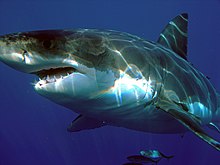



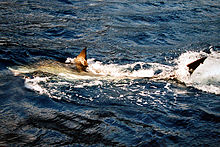

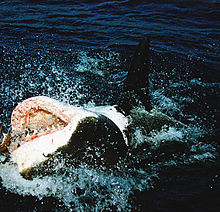



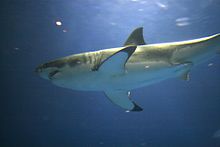

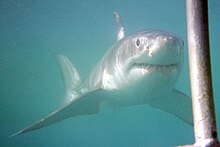


No comments:
Post a Comment